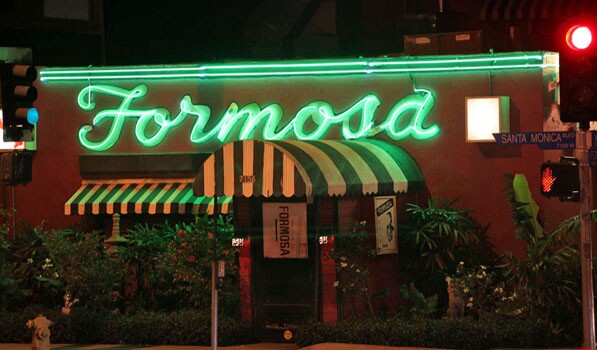To Drink and Dine in L.A.

Some friends and I over the past year or so have been eating and drinking in L.A.'s past -- at the bars, restaurants, and hash houses (some recently hipsterized) that continue in business on the margin between nostalgia and the city today.
Phillippe's (1001 North Alameda Street) is probably the oldest of them, although it has migrated over the years and the restaurant's name has changed. Cole's Pacific Electric Buffet (118 East 6th Street) had been the divey-est until its reopening in 2008. Unlike Phillippe's, Cole's has lingered in the same location and at the edge of what is still, despite considerable gentrification, skid row.
The barmen at Cole's are adept classicists. The dipped sandwiches at Phillippe's aren't better, just better remembered.
Tom Bergin's Tavern -- or more ornately, Tom Bergin's Old Horseshoe and Thoroughbred Club (840 South Fairfax Avenue) -- has been carefully renovated, too, by toning down the bar and touching up the dining room. The meal wasn't quite memorable, but the service was -- warm and personable. It was a slow evening, and we had time to talk with the youngish waiter and to hear his stories (part yearning, part nothing-better-to-do) of coming to L.A.
We had a surprisingly good breakfast at La Golondrina (17 Olvera Street) after declining to wait in a long line at the Pantry. The kitsch of Olvera Street has now itself become so historic that nothing about the street's fakery seems particularly artificial. The mercenary mariachis play loudly for tourists and locals alike, both having a good time.
We sort of fell into the Pacific Dining Car (1310 West Sixth Street) late, after an odd evening at a Randolph Scott film festival at UCLA. The restaurant was mostly empty at that hour and very proper for what had once been a roadside beanery. Again, the company of the waiter made the meal, with his stories of arriving in L.A. from Nicaragua.
We had drinks the other evening at Formosa Café (7156 Santa Monica Boulevard), steeped in the red light that used to be traditional for Chinese-themed bars. Michael the bartender was working a slow shift on Emmy night and had time to talk with us about his days as a young man in New York. Afterwards, we had one of the best dinners of our eccentric tour at Taix French Restaurant (1911 West Sunset Boulevard). The waiter -- a Parisian d'un certain âge -- flirted with the lady at our table to everyone's pleasure
The classic restaurants of L.A. seem to be holding up under the pressures of changing taste and the lousy economy. We did notice that, except for Cole's, our fellow diners were mostly older (even than me), who may have placed familiarity over adventure in their choice of a place to eat.
As pleasant as the meals were and as reviving were the drinks, the sum of our dining out in historic Los Angeles has been less about entrées and alcohol and much more about the people we've met and the stories they tell. Our encounter with dining rooms and bars hasn't been nostalgic at all. Instead, it's been encounters with new faces in old places.
D. J. Waldie, author and historian, writes about Los Angeles twice each week at KCET's SoCal Focus blog.


